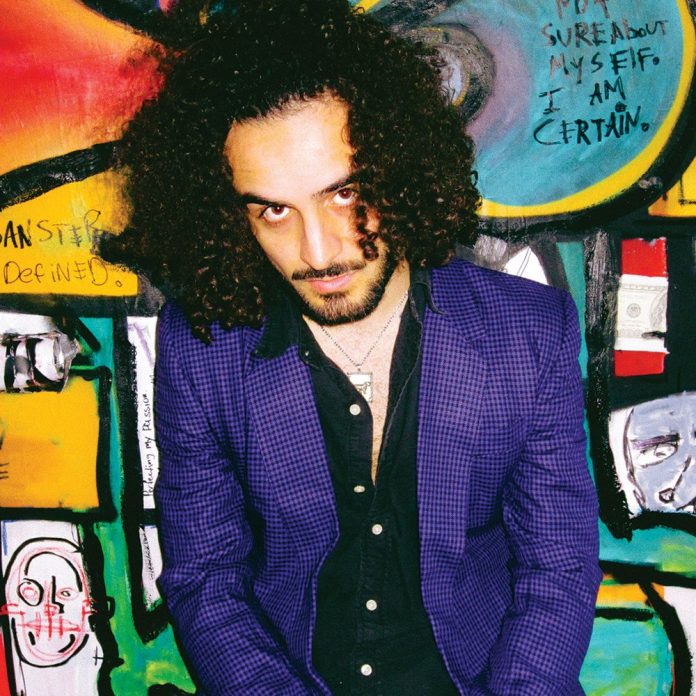There’s something mesmerizing about artist Anthony Sims’ digital work, “Not Sure About Myself, I Am Certain” — a grotesquely colorful, skeleton-like creature moving its limbs amid a collage of random sketches that spin and float about the canvas.
It’s a painting, essentially, which the Fort Worth-based artist created by hand before handing it over to fellow artist Andri Wibowo, known professionally as TagaPaw. With TagaPaw’s help, Sims’ physical painting turned into an animated, multimedia piece that can only be experienced on a screen.
Then came the next step, perhaps the most challenging of all — selling it.
Making money off digital works like these is tricky for the artists who create them. Any image or video posted online can land in someone’s camera roll with a simple screenshot or screen recording. Of course, this method generally results in a loss of quality — plus, you don’t really own the work; technically, you stole it. Technically.
But there is a way to buy original digital art, similar to the way one would purchase an original painting or sculpture, set it in their home, and call it theirs.
Enter NFTs.
An NFT (that is, a nonfungible token) is a digital asset such as a photo or video, bought and sold via cryptocurrency, with each transaction recorded on a ledger known as a blockchain. The blockchain keeps track of each time the work comes into the hands of a new owner — a certificate of authenticity, so to speak, that sets the work apart from a screenshot or recording.
Even tweets and memes are making money as NFTs; some may remember a couple notorious instances that made headlines, like when the viral Nyan Cat YouTube video sold for almost $600,000 in February or when Twitter co-founder Jack Dorsey sold his very first tweet for more than $2.9 million in March.
Then there’s Sims, who in January began putting his work up on the digital art marketplace, SuperRare. One of those pieces was “Not Sure About Myself, I Am Certain,” that skeleton animation he created with TagaPaw.
In May, the piece sold for $99,973 — within an hour of its listing.
“[NFTs] are a new method of verification. It’s not super revolutionary; however, the revolutionary aspect of it is now we have a way to verify digital art. We didn’t have that before,” Sims says. “Now digital art can be treated like fine art.”
NFTs are trending in the art world, particularly for digital creators like Sims, who are finding more value in selling through this method as opposed to an art show or Etsy.
Nick Bontrager, an associate art professor at TCU, has helped some of his students enter the cryptocurrency space. Not only does it save the artist time and money, he says — it’s also an ideal way to make a transaction during the COVID-19 pandemic when noncontact exchanges may be preferable.
“For the first time in an artist’s career, they can create something on their laptop or computer and not have to say, ‘Oh, now I have to find a print shop to turn this digital painting into a piece of canvas or paper so I can sell it on Etsy,’” Bontrager says. “By not leaving their room, they can offer it for sale and have worldwide buyers looking at their artwork that they’ve created and potentially buying and collecting it, which is fantastic.”
Bontrager compares cryptocurrency to currency exchanged at an airport. Buyers can exchange real money (such as American dollars) for digital money (such as Ethereum) on an exchange website, and its value is constantly changing.
“It’s just one more way to cater to a buyer, seller, and creator,” Bontrager says. “Rather than take a portfolio of my artwork to every gallery, museum, whatever in the metroplex, and possibly walk away with nothing, I have this other new opportunity to have a similar process with less risk.”
As for Sims, he sees NFTs as a new frontier for art. He’s quit his day job as a robotics technician and has committed to doing art full time, going on to show his work in places like Denver and Los Angeles. He also continues to sell on SuperRare; a couple notable pieces like “Love” and “Saint Death” recently sold for over $11,000 each.
“NFTs changed my life,” Sims says. “That [almost] $100,000 piece solidified my name as not just a fine artist but a crypto artist. I’m permanently now a part of this movement.”
Credit: Source link






















 Bitcoin
Bitcoin  Ethereum
Ethereum  Tether
Tether  Solana
Solana  USDC
USDC  Lido Staked Ether
Lido Staked Ether  XRP
XRP  Dogecoin
Dogecoin  Toncoin
Toncoin  Cardano
Cardano  Shiba Inu
Shiba Inu  Avalanche
Avalanche  TRON
TRON  Wrapped Bitcoin
Wrapped Bitcoin  Bitcoin Cash
Bitcoin Cash  Polkadot
Polkadot  Chainlink
Chainlink  NEAR Protocol
NEAR Protocol  Polygon
Polygon  Internet Computer
Internet Computer  Litecoin
Litecoin  Uniswap
Uniswap  LEO Token
LEO Token  Dai
Dai  First Digital USD
First Digital USD  Hedera
Hedera  Stacks
Stacks  Ethereum Classic
Ethereum Classic  Aptos
Aptos  Mantle
Mantle  Cronos
Cronos  Stellar
Stellar  Cosmos Hub
Cosmos Hub  Render
Render  Filecoin
Filecoin  OKB
OKB  Pepe
Pepe  Bittensor
Bittensor  Immutable
Immutable  Renzo Restaked ETH
Renzo Restaked ETH  XT.com
XT.com  dogwifhat
dogwifhat  Arbitrum
Arbitrum  Maker
Maker  The Graph
The Graph  Optimism
Optimism  Wrapped eETH
Wrapped eETH 
